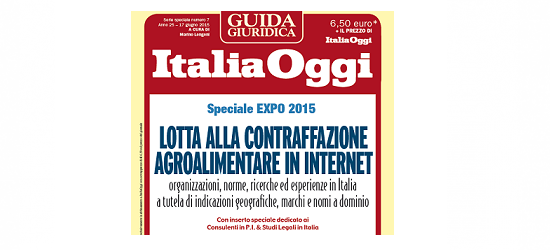
Marco Mergati and Alessandra Zavatti, Lawyers – Studio Ghidini Girino e Associati, Milan
The designations of origin (“denominazioni di origine protetta”, DOP) and protected geographical indications (“indicazioni geografiche protette”, IGP) are primary tools to enhance the products of agribusiness.
The term “DOP” identifies products originating from a certain region, whose qualities are essentially or exclusively due to a particular geographical environment with its inherent natural and human factors, and whose production steps all take place in that specific area. “IGP” identifies products originating from a particular region, so that such geographic origin attributes to these products a certain quality, reputation or other characteristics, given that their production or processing or preparation takes place in that particular area. Said geographical indications are a symbol of quality arising from the combined action of particular geographical and atmospheric condition of the places of origin, together with producers’ knowledge (the traditional ‘know-how’). They also grant a double protection. These two goals of protection do not nullify each other, but they cooperate to ensure, both in the short and (especially) in the long term, an higher level of competition in the market by exploiting niche products and productions more oriented to quality rather than quantity, against an increasingly standardized market.
Geographical Indications connect, as hinted, two defenses. The first one, is a guarantee for the consumer; the second one is a guarantee for the entrepreneur/producer.
Indeed, the consumer must be prevented from buying an oil presented as a “Tuscan Extra-virgin Olive Oil” by a luxury British department store and from its online e-shop (an even more alarming circumstance, regarding to the chance to reach an even wider number of consumers/users), since the consumer could be persuaded to buy a bottle of oil coming straight from the Tuscan hills, whereas he is about to buy an oil bottled in the UK.
The protection of geographical indications is aimed at satisfying the rightful need of the consumer to know what he buys. Indeed the consumer should neither be confused when he is buying a product, nor be subject to deceptive messages by third parties, which put on the market products that ‘look’ or ‘sound’ like protected geographical indications, without complying to the production standards. Geographical marks, indeed, communicate precise information: in particular, they provide information on the origin of the products, on their quality and on their submission to a strict production regulation, validated both at a National level (by the Ministry of Agriculture) and at a European level (European Commission). The protection of geographical indications is, in fact, aimed (also) at protecting their evocative use. Therefore, it is sufficient that a product does not come from a particular region to determine a violation of a geographical indication.
In this sense, we can focus on the second scope of protection: the entrepreneur/producer’s protection against the unlawful exploitation of geographical indications. The protection, in this case, is granted to the entrepreneur/producer, which will not see thwarted his best efforts and achievement of higher quality standards, by unlawful acts of free riders who want to grab the advantages connected to products coming from a particular geographical region. There is a large number of case law in this filed, starting from the decision issued by the EU Court of Justice in the case regarding the mark ‘Parmesan’, properly considered as evocative of the name ‘Parmigiano-Reggiano’ (C-132/05, February 26, 2006, EEC Commission v. Federal Republic of Germany).
